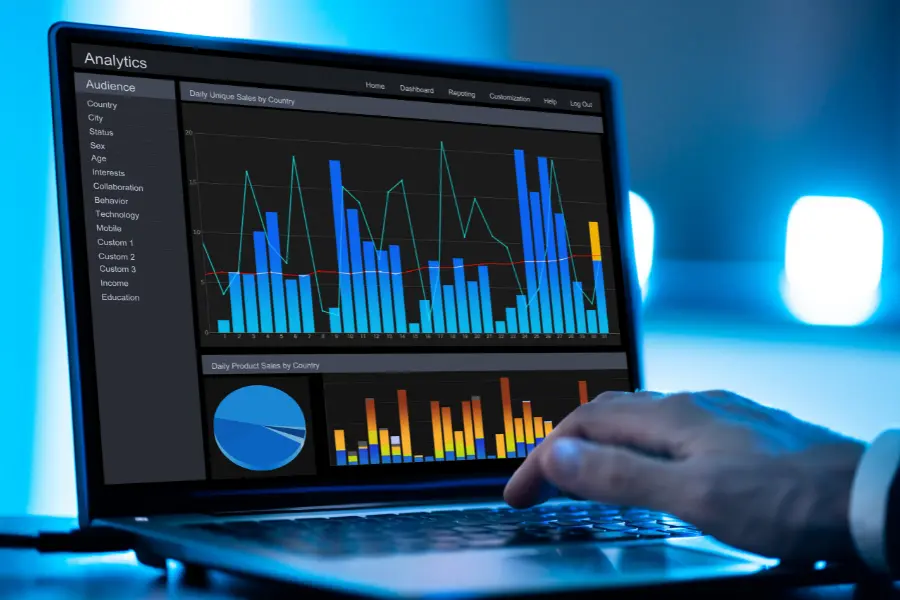How Google Utilises Predictive Analytics for User Behavior Insights
Google leverages predictive analytics to gain deep insights into user behaviour, which enhances its services, ad targeting, and overall user experience. Here’s an exploration of how Google employs predictive analytics for user behaviour insights:

1. Data Collection and Integration
Google collects vast amounts of data from its diverse range of services, including search queries, website visits, ad interactions, location data, and more. This data is integrated and analysed to understand user behaviour patterns. Key sources include:
- Search Data: Keywords, search frequency, and click-through rates.
- Ad Interactions: Ad impressions, clicks, and conversions.
- Google Analytics: Website traffic, user demographics, and behaviour flow.
- Google Maps: Location history and navigation patterns.
- YouTube: Video views, watch time, and user engagement.
2. Machine Learning Models
Google employs advanced machine learning models to analyse historical data and predict future user behaviour. These models include:
- Regression Analysis: Predicts numerical outcomes such as future search volumes or ad click-through rates.
- Classification Algorithms: Categorizes users based on behaviour patterns, such as likely buyers or frequent searchers.
- Clustering: Groups users with similar behaviours to identify trends and segment audiences.
- Neural Networks: Used for complex predictions like content recommendations on YouTube and personalised search results.
3. User Behavior Insights
Predictive analytics provides several key insights into user behaviour:
- Search Intent: Predicting what users are likely searching for based on historical data and current trends. This enhances the relevance of search results and ad placements.
- Content Recommendations: Predicting which videos, articles, or products a user is likely to engage with next, improving the user experience on platforms like YouTube and Google News.
- Ad Targeting: Predicting which ads a user is likely to click on or engage with based on past behaviour, improving the efficiency and effectiveness of ad campaigns.
- Personalization: Tailoring user experiences across Google services by predicting user preferences and interests.
4. Real-Time Predictions
Google's predictive analytics operates in real-time to provide up-to-date insights and enhance user interactions:
- Dynamic Ad Bidding: Real-time predictions adjust bids for ad placements based on the likelihood of user engagement and conversion.
- Instant Search Suggestions: Predictive text suggestions in the search bar help users find information faster by anticipating their queries.
- Live Content Recommendations: Platforms like YouTube use real-time predictions to recommend videos as users navigate the site, keeping engagement high.
5. Applications Across Services
Predictive analytics is applied across various Google services to improve functionality and user satisfaction:
- Google Ads: Enhances ad targeting, bidding strategies, and conversion predictions to optimise advertising ROI.
- Google Search: Improves search result relevance, voice search predictions, and personalised search experiences.
- Google Assistant: Anticipates user needs and queries to provide more accurate and helpful responses.
- Google Analytics: Provides predictive insights for website and app performance, user segmentation, and marketing strategies.
6. Ethical Considerations and Data Privacy
Google’s use of predictive analytics also involves addressing ethical considerations and ensuring data privacy:
- Transparency: Providing users with clear information on how their data is used for predictions and recommendations.
- User Control: Allowing users to manage their data preferences and opt out of personalised predictions if desired.
- Data Security: Ensuring robust security measures to protect user data from unauthorised access and breaches.
7. Impact on Businesses and Users
Predictive analytics enables businesses to:
- Optimise Marketing Strategies: By understanding user behaviour, businesses can tailor their marketing efforts to better meet user needs and increase engagement.
- Improve Customer Experience: Personalised recommendations and predictive insights enhance the overall user experience, driving satisfaction and loyalty.
- Increase Efficiency: Automated predictions reduce the manual effort required for data analysis and decision-making.
Google’s use of predictive analytics for user behaviour insights exemplifies the power of advanced data analysis and machine learning. By leveraging vast datasets and sophisticated models, Google enhances user experiences, optimises ad targeting, and provides valuable insights to businesses. This continuous improvement cycle not only benefits Google’s ecosystem but also sets a benchmark for the industry in harnessing predictive analytics for meaningful outcomes.
Active Events
Your Data Science Career Game-Changing in 2024: Explore Trends and Opportunities
Date: Feburary 28, 2025 | 7:00 PM (IST)
7:00 PM (IST) - 8:10 PM (IST)
2811 people have registered
Data Scientist Challenges One Should Avoid
Date: Feburary 25, 2025 | 7:00 PM (IST)
7:00 PM (IST) - 8:10 PM (IST)
2753 people have registered
Bootcamps
Data Science Bootcamp
- Duration:8 weeks
- Start Date:October 5, 2024
Full Stack Software Development Bootcamp
- Duration:8 weeks
- Start Date:October 5, 2024
